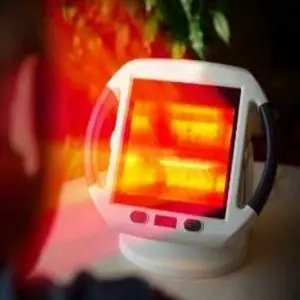Here I’ll be discussing the dangers of infrared light exposure. While they are very useful in certain applications, infrared lights need to be used with caution.
What are infrared lights?
Infrared lights, also known as red light therapy, are a type of LED (light-emitting diode) that emit low levels of infrared light. Infrared light is a type of electromagnetic radiation. Infrared radiation is a portion of the electromagnetic spectrum that is below red in color. Infrared waves are longer than visible light waves.
Infrared lights are used in a number of different applications. They are used in entertainment devices such as TVs, DVD players, and remote controls. They are also used in medical devices such as infrared saunas and infrared cameras.
How are infrared lights used?
These lights are used medically in a variety of ways, including:
- To promote wound healing
- To reduce inflammation
- To increase blood flow
- To relieve pain
- To improve skin complexion
Infrared lights are also used in a variety of other settings, including:
- Weather forecasting
- Saunas
- Security cameras
- Night vision equipment
What are the dangers of infrared lights?
While infrared lights have many uses, there are also some dangers associated with them. These dangers include:
- Skin irritation: Infrared lights can cause mild skin irritation, redness, and swelling. This is typically temporary and will resolve on its own.
- Eye damage: Infrared light can damage the retina (the back of the eye) if not properly shielded. This can lead to vision problems or even blindness. Be sure to wear proper eye protection when using infrared lights.
- Increased risk of cancer: Some studies have shown that long-term exposure to infrared lights can increase the risk of cancer, although more research is needed to confirm this.
Exposure to infrared radiation can cause damage to the eyes and skin. It can also cause problems with breathing and heart rate.
How can you protect yourself from infrared lights?
Some people believe that spending time in front of an infrared heat lamp, sauna, or sun bed can have health benefits. Whilst there is some evidence to support this, there is also concern that too much-infrared radiation could be harmful.
There are three main ways you can be exposed to infrared radiation:
1) Infrared saunas and sun beds. These emit high levels of infrared radiation and should be used with caution.
2) Infrared heat lamps. These are commonly used in physiotherapy and can be beneficial if used as recommended by a healthcare professional. However, prolonged exposure to direct light from an infrared heat lamp could damage your skin.
3) Daily exposure to the sun. We all need sunlight for good health, but too much sun exposure can increase your risk of skin cancer. Seek shade when the sun is at its strongest (between 11 am and 3 pm in the UK), cover up with clothing, and use sunscreen with a high SPF to protect your skin.
If you are going to be exposed to infrared light, it is important to wear adequate eye protection and limit your exposure time.
What are the symptoms of infrared light exposure?
Infrared light waves are a type of electromagnetic radiation. Electromagnetic radiation is a form of energy that travels through the air and can be absorbed by living tissue.
Exposure to infrared light waves can cause a number of symptoms, including:
- Redness
- Swelling
- inflammation
- Vomiting
- Diarrhea
- Seizures
- Coma
- Death
What are the long-term effects of infrared light exposure?
There is limited research on the long-term effects of infrared light exposure, but some studies suggest that it may be harmful. Infrared light is a type of electromagnetic radiation, and like other types of EM radiation, it has the potential to damage DNA and other cellular structures.
In addition, infrared light can cause inflammation and skin damage. Prolonged exposure to infrared light may increase the risk for some types of skin cancer.
If you are concerned about the possible risks of infrared light exposure, you can talk to your doctor or a dermatologist about ways to protect yourself.
How can you get rid of infrared light exposure?
There are several ways to reduce your exposure to infrared radiation. For example, you can wear protective clothing or sunglasses when you are outdoors. You can also use sunscreen with an SPF of 30 or higher to protect your skin from infrared light. Finally, you can try to avoid spending time in environments where there is a lot of infrared radiation, such as saunas or tanning beds.
Infrared light is a type of electromagnetic radiation that is invisible to the naked eye. It has a longer wavelength than visible light and is absorbed by material objects rather than bouncing off them. While infrared light is not harmful to the human body in small doses, exposure to large amounts of infrared radiation can be dangerous. This is because infrared radiation can heat up the body’s tissues, which can lead to burns or even cancer.
How can you prevent infrared light exposure?
There are a few things you can do to prevent overexposure to infrared light:
- Wear sunglasses or goggles that block out IR radiation when you are outdoors.
- Make sure the windows in your home and car are tinted to block out IR radiation.
- Do not use devices that emit high levels of IR radiation, such as tanning beds and heat lamps, unless absolutely necessary.
- If you must use these devices, limit your exposure time as much as possible.
In Closing
While this type of light is invisible to the human eye, it can harm our health. Prolonged exposure to infrared light can cause damage to the eyes and skin, and can even lead to cancer. So please be sure to take precautions when exposed to this type of light!
NEXT UP: Infrared Light vs. UV Light

